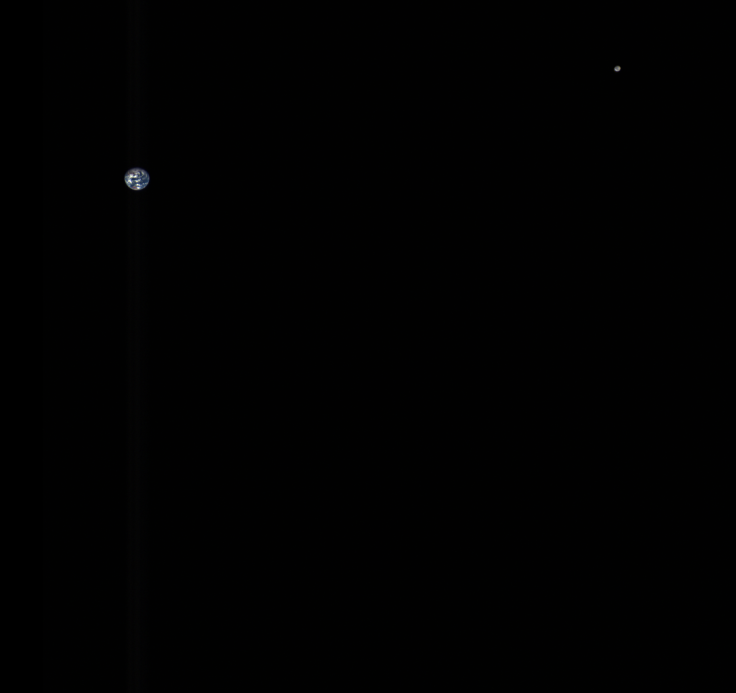Nasa's asteroid hunter captures Earth-Moon duo in a breathtaking shot
The image was taken from a distance of about 5 million kilometres.

Nasa's Osiris-Rex, the famous spacecraft hurtling towards a distant asteroid, has taken a breathtaking shot of Earth and its Moon – the duo sitting together in the darkness of the cosmos.
The spacecraft, which has been launched to survey, map, and retrieve samples of asteroid Bennu, is flying deep in space to reach its destination. However, on occasions, it takes time out to look back at our planet.
Back in September, Osiris-Rex swung by a cloudy Earth and sent a stunning shot showcasing Australia, Baja California and parts of the US. The image was taken from a distance of about 170,000km.
Now, the spacecraft has gone way past that mark but is still sending back spectacular wide-angle shots, featuring not only of our planet but also its surroundings.
Nasa shared an Osiris-Rex image on Tuesday (3 January 2018), showing the beauty of our home planet and its only natural satellite from a distance of about 5 million kilometres.
The image, a composite of multiple shots taken by the spacecraft's MapCam instrument, was enhanced, colour-corrected, and brightened to make the features, particularly the cute, little moon visible in the darkness of space.
While the shot reveals the Earth and Moon sitting in cosmic blackness, it also shows how alone the world we live in is. The image was taken on 2 October, according to Nasa.
The main mission of the asteroid hunter continues to remain Bennu, a "carbon-rich hunk of rock that might contain organic materials or molecular precursors to life". The asteroid could make an eerily close pass by Earth or even make an impact after several centuries.
However, as asteroids are remnants from the early Solar System, studying the space rock could provide Nasa crucial insights into the evolution of our world and its planetary siblings. Osiris-Rex was launched in 2016 and is expected to reach Bennu in August 2018. After completing its mission, the spacecraft will return to Earth sometime in 2023, bringing in more data and prolific cosmic shots.





















